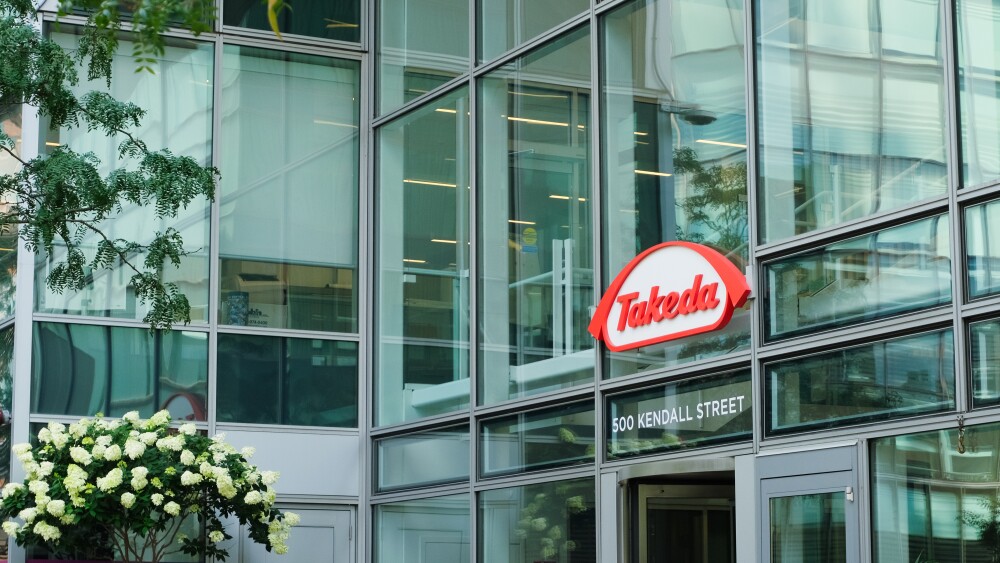After decades of limited progress—owing to the difficulty of treating the disease and resultant market risk—glioblastoma research is entering a new phase spurred by smarter trials, targeted funding and renewed interest from companies like Merck and Jazz Pharmaceuticals.
Glioblastoma, a deadly brain cancer, is notoriously difficult to treat. But recent acquisitions by Merck and Jazz Pharmaceuticals and the development of innovative adaptive trials signal a renewed push to develop effective treatments for this aggressive malignancy.
Representing nearly half of all primary malignant brain tumors, the median survival rate for patients with glioblastoma (GBM) is just 14.6 months, according to The Glioblastoma Research Organization. Yet there have been few therapeutic breakthroughs over the last 20 years. Only two drugs have emerged in this time, Temodar (temozolomide), developed by Merck, and Avastin (bevacizumab), marketed by Roche.
This lack of success in uncovering new treatments is not due to a lack of effort; there were over 1,500 registered glioma trials between 2006 and 2021. However, high-profile trial failures led to a decline in interest from the pharmaceutical industry in developing new GBM treatments.
“When Big Pharma steps out, most institutional investors step out too, because there’s no exit for them,” Yash Thukral, co-executive director of Innovate GBM, told BioSpace. “If institutional money is not being invested, no retail money is going to be put in. So what ends up happening is companies working in the space get less and less capital over time and become forgotten.”
This leads to a cycle where fewer investments mean companies lack the capital necessary to progress assets, which reduces clinical trial success in the area and therefore industry investment, Thukral explained.
This is beginning to change as deals and investment flow back into the space. Last October, Merck acquired Modifi Biosciences, which is developing DNA modification–enabled cancer therapeutics, including for GBM, in a deal valued at up to $1.3 billion. Then in March, Jazz bought out Chimerix for $925 million to gain access to the biotech’s diffuse glioma candidate. Jazz is anticipating an FDA decision for the drug, dordaviprone, later this month.
But in the meantime, adversity has led to creativity. During the lean times, without access to this slowly emerging capital, GBM researchers have pivoted, and the space has seen growth in alternative methods to support early-stage research for new GBM treatments.
A Vicious Cycle
All told, pharma sinks 45% of its overall R&D spend into oncology. With no certainty of success in clinical trials, the area’s relatively high revenues and low development costs manage to offset the risk of developing assets for cancer. GBM, however, poses serious challenges to treatment, and, therefore higher risk.
“Because of the location of the tumors and the biology of the brain—obviously, there are all these different cell types—and the way these tumors grow very quickly and kind of put out feelers into the rest of the healthy brain, it is very difficult to treat,” Marianne Baker, science engagement manager at Cancer Research UK (CRUK), told BioSpace. “The challenge is that the tumors are very difficult to see, and very hard to take out accurately and fully.”
This places GBM into a pool of “hard-to-treat cancers,” Baker noted, which also includes certain brain, lung, pancreatic, liver and stomach cancers. Developing a treatment for GBM is then both appealing to the pharma industry—because creating a new standard of therapy could be lucrative—but prohibitive due to its difficult-to-treat nature, small patient population (around 3 people per 100,000 in the U.S.), and high level of clinical failure.
Creating an Ecosystem
According to Thukral, Innovate GBM was set up to allow smaller companies better access to those venture capital firms or institutions that could provide funding and, in return, de-risk the investment into these assets. To this end, it has developed a network of key opinion leaders, service providers, patient advocacy and outreach groups, FDA officials, universities, drug developers and investors, he explained.
This allows those interested in potentially investing in assets to speak directly with all parties on the likelihood of a candidate’s success, essentially a streamlined due diligence. Before Innovate GBM, these stakeholders were not well-connected, which slowed down the exchange of ideas and the opportunity for candidates to receive the required funding, according to Thukral.
CRUK has also recognized the need to support GBM with greater levels of funding in recent years, Baker said, adding that the research charity has shifted strategy to “carve out a dedicated space and funding to support areas where there’s a clear gap.”
To progress work in the area, CRUK set up a network in the U.K. called the Brain Tumor Centres of Excellence in 2018, which supports experts in the field to carry out research, drug development and clinical trials. Last year, this initiative provided funding for a world-first adaptive clinical trial to test new treatments for people living with brain cancer by having each patient’s genome sequenced, and the drug combination tailored to the specific genetics of their cancer.
The organization has had previous success in the area. CRUK’s researchers were the first to discover a precursor molecule that later became temozolomide.
The Seeds of Success
Though progress toward the development of new drugs has been slow over the last two decades, there are signs that the broader efforts to develop new candidates and harness new technologies could yield better treatment options in the future.
Since its inception in 2023, Innovation GBM has helped raise over $170 million in public investments across nine brain tumor companies. Outside of these companies, Alpheus Medical has also had success in raising funds, securing $52 million in a series B round in May to evaluate its sonodynamic therapy (SDT) in patients with newly diagnosed GBM.
In emailed comments to BioSpace, Vijay Agarwal, CEO of Alpheus, said the company’s therapy works by combining tumor-targeting, FDA-approved drugs with low-intensity diffuse ultrasound. When a drug accumulates in tumor cells and is exposed to ultrasound, the interaction produces reactive oxygen species that selectively kill cancer cells, enabling the destruction of tumor cells beyond the visible tumor mass. Those cells are one of the biggest drivers of recurrence, Agarwal said.
“The funding environment has been tough in general, and glioblastoma carries extra risk because very few therapies have improved patient survival outcomes,” Agarwal explained. “However, Glioblastoma is high-risk, but also high-impact. If you have a therapy that can truly change outcomes, investors will pay attention, even in a tight market.”
Utilizing light instead of sound, CRUK found a way to highlight tumor cells to make surgery more effective. The organization developed the “pink drink,” a molecule called 5-ALA that accumulates in tumor cells, Baker explained. During surgery, it is possible to shine a UV light on the brain that causes the tumor cells to glow bright pink, allowing surgeons to see exactly where the tumor cells are and to remove as many as possible and lower the risk of recurrence.
Attracting Interest
Thukral also noted that the development of GBM Agile, an adaptive clinical trial platform that allows researchers to test multiple GBM treatments using real-time data, marked an inflection point for the therapeutic space.
The platform allows the testing of treatments against historical control groups instead of live control arms, which enables drug developers to cut the cost of trials from approximately $75 million to $25 million, he said. Since its inception in 2018, this has allowed eight companies, including Kazia Therapeutics, Vigeo Therapeutics and Biohaven, to test therapies in later-stage trials.
“You don’t expect change to happen this fast, but I think we’re at an inflection point. Over six years, that’s eight different therapies reaching pivotal trial stages. Even if they don’t finish, we’re getting more shots on goal,” Thukral said, noting that this had piqued big pharma and investor interest. “The markets are realizing that there is real reward potential here.”






